I get a lot of questions asking which shampoo bar recipes are best for different hair types and which ingredients change the bar so that they effect different qualities of hair.
I’m going to try and answer a lot of those questions all in one spot by describing ingredients that effect various hair types and give you a shampoo bar recipe for each of those hair types.
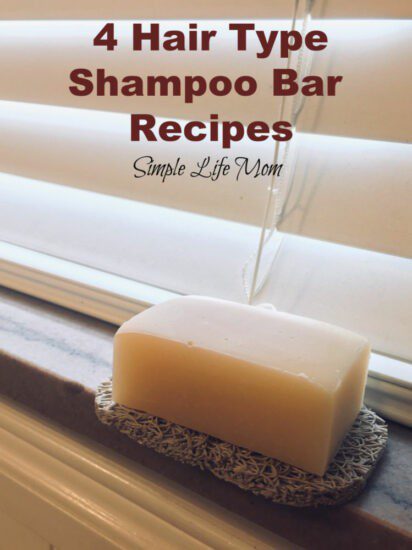
This is information that I’ve learned by trial and error, as well as knowledge I’ve gained about specific ingredients over the years.
People often tell me which shampoo bar from my shop that they prefer for their hair (Check them out by clicking here.). This has given me a great idea of what shampoo bar recipe works for people and why. So let’s dive right in to a discussion about ingredients!
Shampoo Bar Recipe: Ingredients and Superfatting
My bars are always 100% natural and healthy for your skin and hair. I never compromise for coloring and scent. You can always do without a particular fragrance oil or coloring in light of staying healthy, right? And there are so many great scent combinations out there to choose from that there’s really no room for complaint.
So what makes a good shampoo bar? The ingredients and superfat content.
Superfat or Lye Discount
Superfat or lye discount is the percentage of oils that are leftover after the saponification process. All lye is used up in the process, and a lot of the available oils are converted with the lye to something completely different: soap. Having leftover oils effects moisture content, conditioning, and hair type designation.
The superfat content is important. Some hair does better with a higher superfat content, while others do better with a lower leftover oil content.
It’s pretty simple. Dry, frizzy hair will benefit from a higher superfat content. Those leftover oils will help condition and moisturize hair. I don’t like to go above 15% because then it starts to drag the hair down after it adjusts.
Oily hair that usually feels too heavy can benefit from a slightly lower superfat content. I know someone that has fabulous hair at 2%
Average hair that is not too dry or oily does very well with 5% superfat content.
Shampoo Bar Recipe Ingredients
Ingredients are huge for the recipe! There has been debates over how much herbal, mineral, or vitamin benefits can be garnered from a short contact time on the hair and scalp with a lather and rinse, but the results speak for themselves.
It has also been shown that the vitamins and herbal additions (which survive much hotter conditions in teas, etc) survive the saponification and are still viable within cold and hot processed shampoos and soaps. After all, lye only reacts with certain types of molecules. This is why you can use plastic, glass, and stainless steele. Herbs don’t have enough triglycerides to be destroyed by lye.
So with this in mind, choosing oils high in certain vitamins and minerals becomes important.
Here is a chart to familiarize yourself with oils used in shampoo bars:
| Oil | Value | Soap Properties |
| Tallow | All around great ingredient for soap making. Makes a great, long lasting, cleaning and bubbly bar. Make sure to choose a free-range, natural source. | Conditioning, Cleansing, Hardness, Stable Creamy Lather |
| Coconut Oil | Coconut can be drying if it is over 45% of total oils in a soap IF you do not compensate by increasing the superfat content. it makes a wonderful cleansing, hard bar with great bubbles. | Cleansing, Adds Hardness, High Lather with High Stable Bubbles |
| Avocado Oil | High in vitamins A, B, D and E oleic and palmitoleic acids. | Conditioning, Medium Creamy Lather |
| Babassu Oil | High in vitamin E and antioxidants like phytosterols. | Cleansing, Adds Hardness, High Bubbles |
| Castor oil | 90% ricinoleic acid, which has traditionally been used to help heal skin conditions. | Conditioning, Moisturizing, Creamy Lather with High Stable Bubbles. |
| Cocoa Butter | High in vitamin E and other antioxidants. It doesn’t fully saponify, so it lends more of its properties to soap after curing. | Conditioning, Moisturizing, Adds Hardness, Stable Rich Lather |
| Sweet Almond Oil | Gentle on the skin, Has vitamin A and E and oleic and linoleic acid. | Stable Medium Lather |
| Shea Butter | Gives a silky feeling to bars. High in vitamins A and E, fatty acids and minerals. | Conditioning, Adds Hardness, Stable Lather |
| Olive Oil | Gentle oil with little cleansing properties, but high in antioxidants (Vitamin E and polyphenols). Makes a very soft soap and is best paired with a harder fat or oil. | Very Conditioning, Low Cleansing |
| Apricot Kernel Oil | High in vitamin A, C, E, linoleic and oleic acids. Too much can make soap too soft. | Highly Conditioning, Moisturizing, Stable Creamy Lather |
| Argan Oil | High in vitamin A and E and antioxidants. | Conditioning, Moisturizing, Adds Hardness, Stable Rich Lather |
| Neem Oil | Calming, gentle oil used in soaps as an anti-inflammatory and anti-bacterial oil. | Conditioning, Moisturizing, Adds Hardness, Stable Creamy Lather |
| Mango Butter | High in Vitamin A and C and antioxidants. | Conditioning, Moisturizing, Adds Hardness, Creamy Lather |
| Macadamia Nut Oil | High in antioxidants, oleic acid, omega 3 and omega 6 fatty acids. | Conditioning, Adds Hardness, Creamy Lather |
| Lard | Makes a great, long lasting bar. Make sure to choose a free-range, natural source. | Conditioning, Adds Hardness, Stable Creamy Lather |
| Jojoba Oil | Like beeswax and cocoa butter, it doesn’t fully saponify, leaving more to hydropylic (water loving) qualities to help moisturize dry skin. | Conditioning, Moisturizing, Strong Stable Lather |
| Hempseed Oil | High in vitamins A and E, but can go bad in soap faster than other oils. Use as 5% or less of total oils for a longer lasting bar. | Highly Conditioning, Low Lather |
| Hazelnut Oil | All around great oil for soap because it cleanses, moisturizes, and creates nice bubbles. | Moisturizing, Cleansing, Stable Medium Lather |
| Grapeseed Oil | High in lioleic acid, omega 6 fatty acids, and antioxidants. | Highly Conditioning, Creamy and Stable Lather |
Dry or Frizzy Hair
Moisture is key! The best recipes for this type of hair have honey and milk. Both trap moisture and calm frizziness in hair.
Cocoa butter, honey, bees wax, pumpkin seed oil, and jojoba are also good for dry or frizzy hair because they do not fully saponify, leaving more of their moisturizing qualities within the shampoo bar.
Cedar and cypress essential oils increase blood flow in the scalp and help oil production. Also consider infusing horsetail for added zinc, vitamins, and omega 3s.
Superfat content 10-15%
Oily Hair
Nettle! Nettle regulates oils from the scalp so that oiliness is no longer an issue.
Tallow, Coconut, and Hazelnut oils cleanse really well and help wash excess oils from the hair.
Lower superfat content of 2-5%
Thinning Hair
Thinning hair can be dry and wispy. You don’t want to weigh it down.
Though a lot of people don’t like to hear it, palm oil is the best thing for thinning hair. I have had more people with thinning hair go nuts over my palm oil shampoo recipe than any other bar. You can research companies and learn if they are harvesting on their own field and replenishing instead of wiping out hillsides. There are a number of good companies out there now that awareness has been raised.
5% superfat seems to be the best.
Use shea butter, cocoa butter, neem oil with horsetail infused oils or water.
Try rosemary, cypress, clary sage, and lemon essential oils for revitalization and stimulation of the scalp.
All Purpose Shampoo bar
I recommend nettle again. I love this nettle shampoo bar recipe as well!
Superfat around 5%
A great Tallow or Babassu bar that cleanses well with milk to help condition and moisturize will be great for all hair types.
Castor oil and avocado oil are great additions to an all hair types shampoo bar recipe, as well.
Natural Shampoo Recipes for All Hair Types
So here you go! A recipe for all hair types. Feel free to adjust as you desire. Let me know if you have any questions, and share your experiences with shampoo bars and their ingredients below.
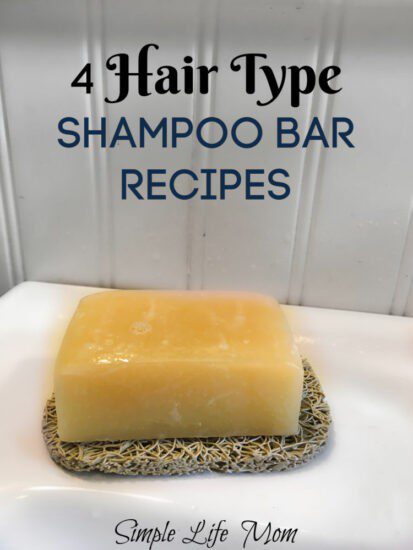
Dry or Frizzy Hair Shampoo Bar Recipe
This recipe is formulated for dry or frizzy hair and makes 12 four ounce bars or 3lbs of soap.
Milk and honey bars can become overheated, so only cover lightly, if at all, if you make this during the summer. Watch for the soap to become too dark or begin to crack, both of which are signs that it is beginning to overheat (though soap always turns translucent and darker during gel phase of curing).
Superfat: 10%
Ingredients:
- 10 ounces coconut oil
- 10 ounces olive oil
- 5 ounces cocoa butter
- 5 ounces castor oil
- 3 ounces jojoba
- 2 ounces pumpkin seed oil
- 7 ounces filtered water
- 6 ounces goat milk or organic whole milk
- 4.5 ounces lye
- 1 Tablespoon raw honey
- 1 ounce essential oil of choice (Try cypress and rosemary)
Directions:
- Combine coconut oil, olive oil, cocoa butter, castor oil, jojoba, and pumpkin seed oil in a stainless steel pot and melt over medium/low heat. Remove from heat and allow to cool to 100 degrees Fahrenheit.
- Weigh water and milk and place in the freezer until frozen of slushy.
- Outside, wearing proper safety gear including gloves and a mask, pour lye crystals into milk water and stir until dissolved. Allow to cool to 100 degrees Fahrenheit. If oils or lye water are not cooling at the same rate, use a cold water bath in the sink.
- When both lye water and oils are at the correct temperature, pour lye water into oils and mix with a hand or stick mixer until medium trace.
- Add raw honey and essential oil and blend well.
- Pour into mold and insulate for 24 hours.
- Remove from mold and cut.
- Allow to cure for 4-6 weeks in a cool, non-humid location.
Oily Hair Shampoo Bar Recipe
This recipe is for people with oily hair, hair that gets oils in sections or all over, or becomes oily quickly after washing. The nettle helps to regulate the scalp’s oil production.
Superfat: 5%
Ingredients:
- 10 ounces tallow or lard
- 7 ounces coconut oil
- 7 ounces olive oil
- 5 ounces castor oil
- 3 ounces hazelnut oil
- 1 tablespoon dried nettle powder or enough fresh nettle to fill water pot
- 12 ounces filtered water
- 4.5 ounces lye
- 1 ounce essential oil of choice (Try rosemary, tea tree, and grapefruit)
Directions:
- Combine tallow, coconut oil, olive oil, castor oil, and hazelnut oil in a stainless steel pot and melt over medium/low heat. Remove from heat and allow to cool to 100 degrees Fahrenheit.
- Outside, wearing proper safety gear including gloves and a mask, pour lye crystals into water and stir until dissolved. Add nettle powder to lye water and allow to cool to 100 degrees Fahrenheit. If oils or lye water are not cooling at the same rate, use a cold water bath in the sink.
- If you have fresh nettle, create a nettle “tea” before hand by heating the water in a saucepan and add enough nettle to fill pot. Heat over low heat for 15 minutes, remove nettle leaves, and allow to cool. Take outside and add lye carefully using protective safety gear.
- When both lye water and oils are at the correct temperature, pour lye water into oils and mix with a hand or stick mixer until medium trace.
- Add essential oil and blend well.
- Pour into mold and insulate for 24 hours.
- Remove from mold and cut.
- Allow to cure for 4-6 weeks in a cool, non-humid location.
Thinning Hair Shampoo Bar Recipe
Superfat: 10%
Ingredients:
- 9 ounces palm oil
- 9 ounces coconut oil
- 5 ounces castor oil
- 5 ounces cocoa butter
- 4 ounces olive oil
- 1 ounces shea butter
- 1 ounces neem oil
- 12.9 ounces filtered water
- 4.6 ounces lye
- 1 ounce essential oil of choice (Try clary sage and lemon)
Directions:
- Combine palm oil, coconut oil, castor oil, cocoa butter, olive oil, shea butter, neem oil in a stainless steel pot and melt over medium/low heat. Remove from heat and allow to cool to 100 degrees Fahrenheit.
- Outside, wearing proper safety gear including gloves and a mask, pour lye crystals into water and stir until dissolved. Allow to cool to 100 degrees Fahrenheit. If oils or lye water are not cooling at the same rate, use a cold water bath in the sink.
- When both lye water and oils are at the correct temperature, pour lye water into oils and mix with a hand or stick mixer until medium trace.
- Add essential oil and blend.
- Pour into mold and insulate for 24 hours.
- Remove from mold and cut.
- Allow to cure for 4-6 weeks in a cool, non-humid location.
All Purpose Shampoo Bar Recipe
This is a great all purpose shampoo bar with great oils for all hair types.
Superfat: 10%
Ingredients:
- 9 ounces coconut oil
- 9 ounces olive oil
- 6 ounces castor oil
- 5 ounces cocoa butter
- 4 ounces apricot kernel oil
- 1 ounces shea butter
- 1 ounces bees wax
- 13 ounces filtered water
- 4.6 ounces lye
- 1 ounce essential oil of choice
Directions:
- Combine coconut oil, olive oil, castor oil, cocoa butter, apricot kernel oil, shea butter, and bees wax in a stainless steel pot and melt over medium/low heat. Remove from heat and allow to cool to 100 degrees Fahrenheit.
- Outside, wearing proper safety gear including gloves and a mask, pour lye crystals into water and stir until dissolved. Allow to cool to 100 degrees Fahrenheit. If oils or lye water are not cooling at the same rate, use a cold water bath in the sink.
- When both lye water and oils are at the correct temperature, pour lye water into oils and mix with a hand or stick mixer until medium trace.
- Add essential oil and blend well.
- Pour into mold and insulate for 24 hours.
- Remove from mold and cut.
- Allow to cure for 4-6 weeks in a cool, non-humid location.


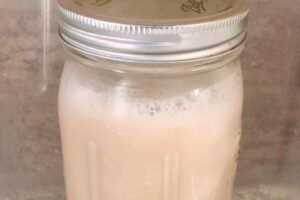
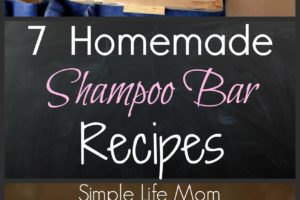
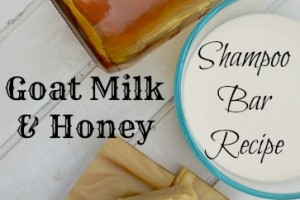

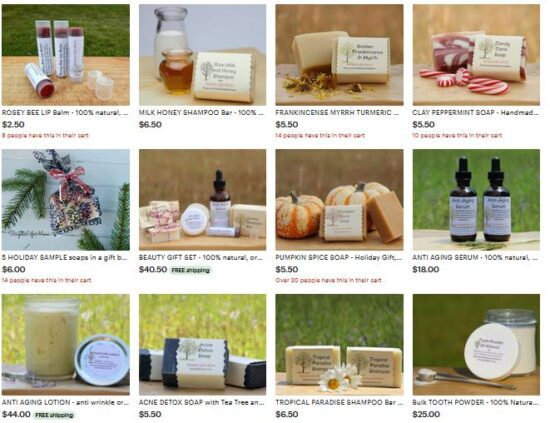
155 Comments
Leave your reply.